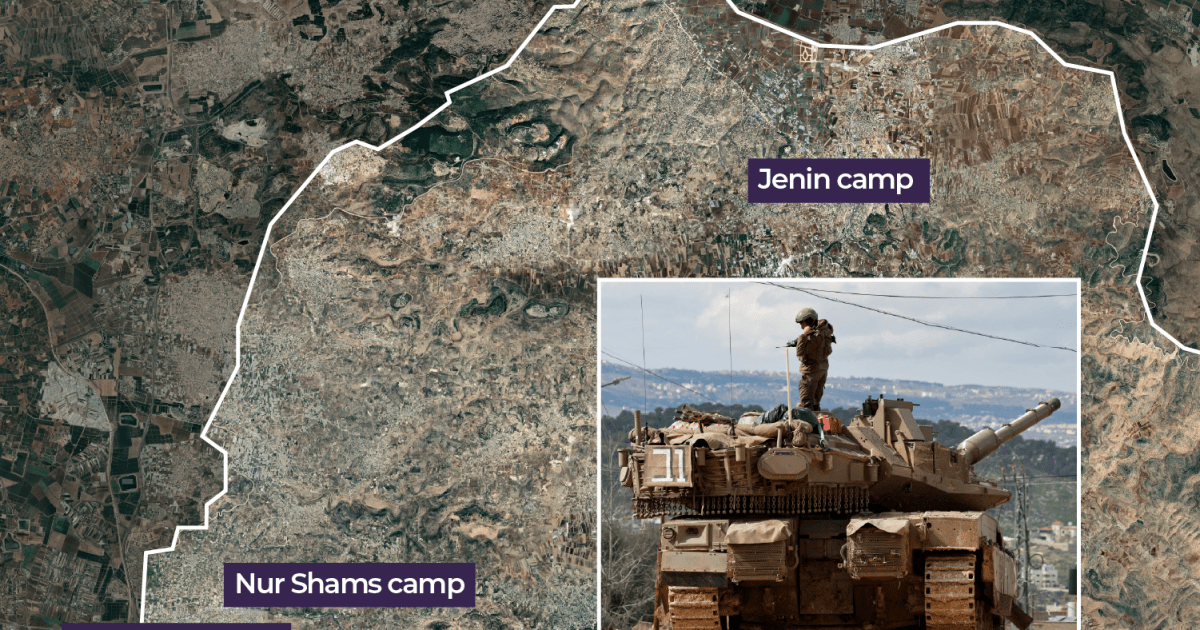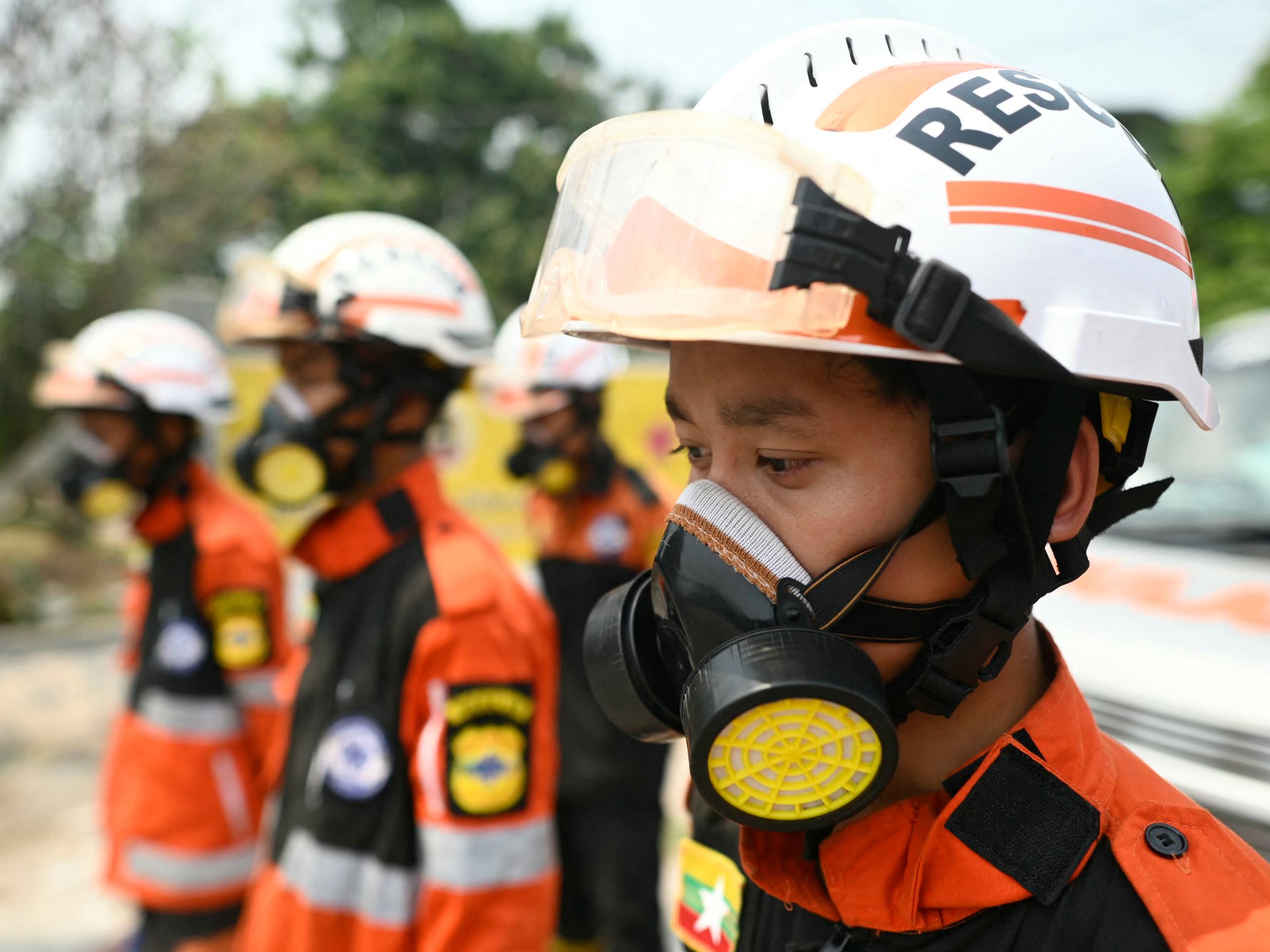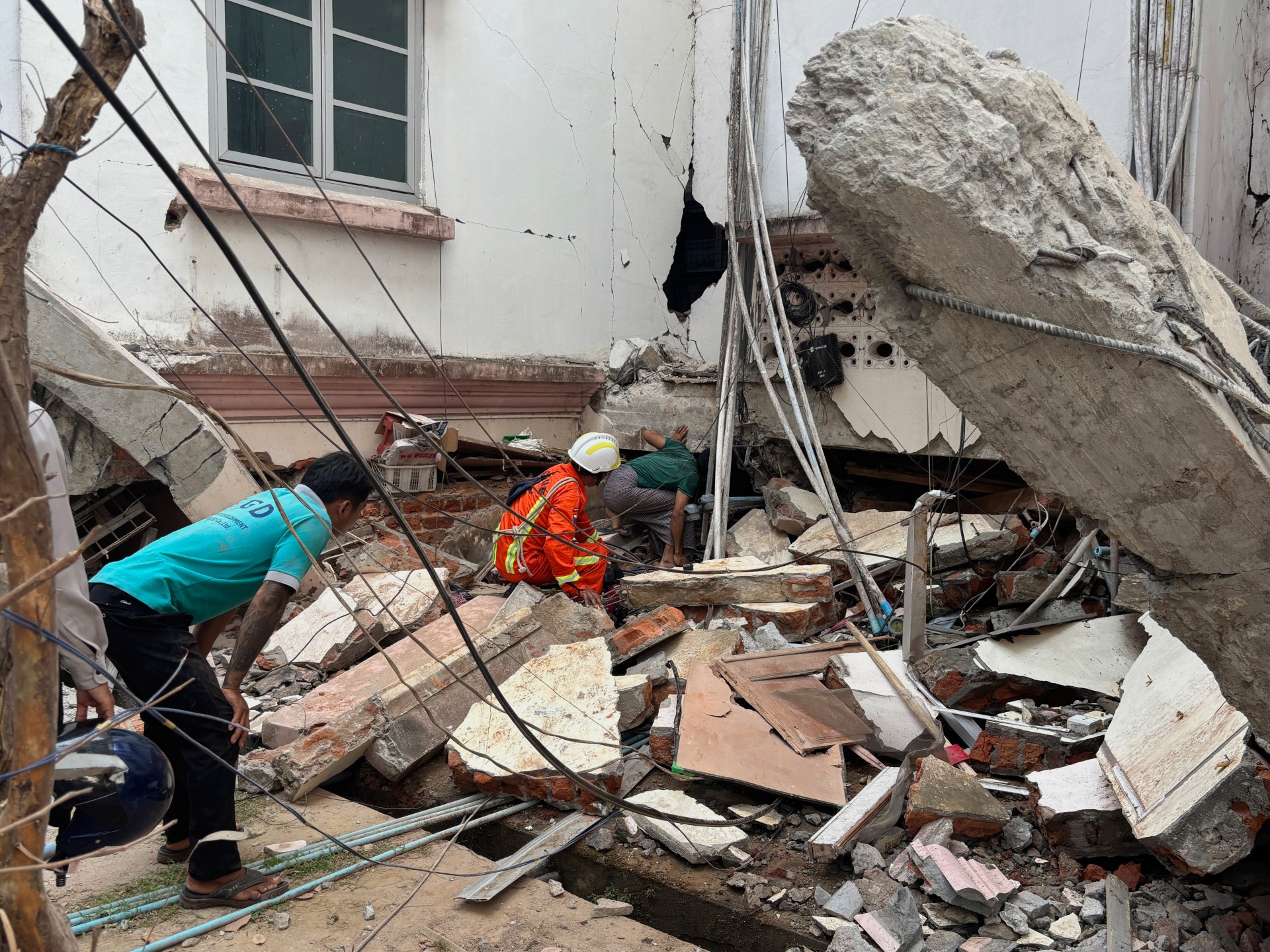

While global attention remains fixed on Israel’s war on Gaza, Israel is rapidly redrawing the map of the occupied West Bank.
On January 21, just two days after a ceasefire took effect in Gaza, the Israeli military intensified its assault across the occupied West Bank, particularly in the northern regions. Israeli bulldozers have razed entire residential areas, forcibly expelling at least 40,000 people from their homes.
For the first time since the second Intifada, Israeli forces have reintroduced tank incursions and air attacks into the West Bank, part of a systematic Israeli strategy to change the geography of the West Bank, paving the way for full annexation.
This report, produced by Al Jazeera’s fact-checking agency, SANAD, draws on United Nations data, satellite imagery, and maps to reveal how this is happening.
The occupied West Bank at a glance
The West Bank, called al-Daffah in Arabic, is west of the Jordan River, from which it gets its name.
Together with occupied East Jerusalem, it covers an area of 5,655sq km (2,183sq miles), making it about 15 times larger than Gaza or roughly the same size as the US state of Delaware.
Advertisement
Since 1967, Israel has militarily occupied the West Bank, subjecting Palestinians to checkpoints, arbitrary arrests, home demolitions, land seizures, settlement expansion and frequent raids, severely restricting every aspect of their lives.
The West Bank is home to approximately 3.3 million Palestinians. It is divided into 11 governorates, with Hebron, or al-Khalil in Arabic, being the most populous at about 842,000 residents. Jerusalem follows with 500,000, Nablus with 440,000, Ramallah and el-Bireh with 377,000 and Jenin with 360,000.
About 700,000 Israelis live in illegal settlements on Palestinian land.

Escalating attacks before October 7
Deadly attacks on Palestinians in the occupied West Bank have persisted for years.
Since systematic documentation began in 2008, UN data shows that at least 1,896 Palestinians have been killed by Israeli forces and settlers.
By October 6, 2023 – just hours before the Al-Aqsa Flood operation – the death toll for 2023 had already risen to 198, surpassing 2022’s total of 154 and making it the deadliest year on record at the time.
Since October 7, 2023, the number of attacks has skyrocketed.

Over the past 17 months, more than 900 Palestinians have been killed in the occupied West Bank. More than half of them were from Jenin and Tulkarem.
Amnesty International described this violence as “brutal”, citing unlawful killings, the disproportionate use of deadly force, and the deliberate denial of medical care to the wounded – all unfolding as global attention remains fixated on Gaza.
Why is the northern West Bank being targeted?
Israel’s continuing military incursion, which it calls “Operation Iron Wall”, has primarily targeted the northern governorates of Jenin and Tulkarem.
Advertisement
These governorates have fewer Israeli settlements than the rest of the West Bank and have long been centres of Palestinian resistance, a factor that has historically hindered their annexation. In response, Israel has carried out systematic raids and large-scale demolitions in these regions, aiming to suppress resistance and establish full control – part of a broader strategy to tighten its hold on the entire West Bank.
The refugee camps in particular have been heavily targeted. Since October 2023, the Tulkarem refugee camp, the second-largest in the West Bank, witnessed the destruction of 205 structures, including homes, commercial buildings, and agricultural infrastructure, followed by 174 structures in Nur Shams camp and 144 in Jenin camp. The peak in Jenin occurred in August 2024, when 37 structures were demolished in a single month.

According to Peace Now, an Israeli nongovernmental organisation (NGO), in 2024 a record-breaking 48 new settlement outposts were established in the West Bank.
Even before the war, settlement expansion was accelerating. In 2023, 31 new outposts were set up, with 21 appearing in just six months between February and July – well before October 7.
Settler attacks have become a daily occurrence in the West Bank, especially in rural areas near settlement outposts. Settlers have blocked roads to Palestinian communities, hindering access to essential services and livelihoods. In some instances, they have destroyed water sources, cutting off vital resources for Palestinian herding communities.

Testimonies from the southern West Bank village of Khirbet Zanuta describe homes and water sources being destroyed, forcing residents to flee. In Nablus, eight families (51 people) were forcibly displaced at gunpoint.
Advertisement
A report by the Israeli human rights organisation Yesh Din, which analysed 1,664 police investigations into settler violence against Palestinians between 2005 and September 2023, found that:
- 94 percent of cases were closed without indictment.
- Only 3 percent led to convictions.
- In at least 80 percent of cases, investigations were closed due to an alleged inability to identify suspects or gather sufficient evidence.
The study highlighted a deep mistrust of Israeli law enforcement among Palestinians, with 58 percent of Palestinian victims in 2023 choosing not to report crimes to the police. B’Tselem, another Israeli human rights group, has described settler violence as “Israel’s unofficial tool” for expelling Palestinians, with the lack of accountability contributing to a culture of impunity.
Illegal seizure of Palestinian land
A June 2024 report by HaMoked, an Israeli human rights organisation, showed that Israel has rapidly intensified its control over the West Bank since October 2023, moving towards full annexation.
This effort is led by Finance Minister Bezalel Smotrich, who was recently given a newly created minister position in the Ministry of Defence, granting him extensive powers over civilian affairs in the West Bank.
Smotrich, a settler who lives on Palestinian land outside the illegal settlement of Kedumin, also heads the Settlement Administration, a division within the Israeli Ministry of Defense, responsible for overseeing the establishment and expansion of Israeli settlements.
Advertisement
In 2024, 24,700 dunams (6,100 acres or 2,470 hectares) were classified as “state land” by Israeli authorities, surpassing the 23,000 dunams annexed between 2000 and 2023. Additionally, 68 illegal settlement outposts were recognised by Israel and provided with infrastructure, deepening Israeli control.
Smotrich’s transfer of planning and demolition powers has accelerated the forced displacement of Palestinians. His administration works with settlers to seize land, demolish Palestinian homes, and recognise illegal outposts, further entrenching settlement control.

Satellite image analysis of northern West Bank
An analysis of satellite images from March 12 over Tulkarem and Jenin reveals widespread destruction and bulldozing by the Israeli military:
- 12.5km (7.8 miles) of roads were destroyed in Tulkarem and Nur Shams camp.
- 17.5km (10.9 miles) of road networks were demolished in Jenin camp.
- Extensive damage to buildings across all three camps.
Since October 7, 2023, the bulldozing of at least 523 buildings, which housed numerous families, has forced nearly 3,000 people from their homes, including:
- Tulkarem camp: 1,070 people displaced after 205 buildings were demolished.
- Nur Shams camp: 965 people displaced following the destruction of 174 structures.
- Jenin camp: 960 people displaced after 144 structures were demolished.
![Satellite image showing destroyed buildings and roads in Tulkarem and Nur Shams refugee camps, March 12, 2025, [Airbus]](https://www.aljazeera.com/wp-content/uploads/2025/03/INTERACTIVE-Tulkarem-camp-Nur-Shams-camp-West-Bank-Israel-1743158423.png?w=770&resize=770%2C595)
![Satellite image showing destroyed buildings and roads in Jenin refugee camp, March 12, 2025 [Airbus]](https://www.aljazeera.com/wp-content/uploads/2025/03/INTERACTIVE-Jenin-camp-West-Bank-Israel-1743158434.png?w=770&resize=770%2C596)
![Satellite image showing destroyed buildings and roads in Tulkarem refugee camp, March 12, 2025 [Airbus]](https://www.aljazeera.com/wp-content/uploads/2025/03/INTERACTIVE-Tulkarem-camp-West-Bank-Israel_1-1743158444.png?w=770&resize=770%2C595)
![Satellite image showing destroyed buildings and roads in Nur Shams refugee camp, March 12, 2025 [Airbus]](https://www.aljazeera.com/wp-content/uploads/2025/03/INTERACTIVE-Tulkarem-camp-West-Bank-Israel-1743158457.png?w=770&resize=770%2C595)
According to the United Nations Relief and Works Agency (UNRWA), displacement has doubled in recent months, with the latest military operation triggering the largest wave of Palestinian displacement in the West Bank since 1967, with more than 40,000 people being forced to flee their homes.
Advertisement
These figures point to a strategy of dismantling Palestinian communities, as their presence in the West Bank poses a demographic challenge to Israel.
New images and reports highlight the scale of devastation in Jenin, Tulkarem and Nur Shams – entire neighbourhoods reduced to rubble, thousands forced to flee and the fabric of Palestinian society under systematic assault.
A unique pattern was identified in Jenin, which was not observed in Tulkarem and its camp. The Israeli military has constructed 14 earthen barriers surrounding the camp, with military vehicles positioned near some of these barriers.
![Satellite image showing Israeli military vehicles and a ground checkpoint in Jenin refugee camp, March 12, 2025, [Airbus]](https://www.aljazeera.com/wp-content/uploads/2025/03/INTERACTIVE-West-Bank-Jenin-road-block-1743158410.png?w=770&resize=770%2C596)
In addition, since October 2023, the Israeli military has imposed severe movement restrictions on Palestinians, with 793 checkpoints by November 2024, 60 percent of which are in Hebron, Nablus, and Ramallah – hindering medical access, disrupting trade and isolating communities.
Open calls for annexation and displacement
Despite rapid settlement expansion, Israel faces a key demographic challenge, as the birthrate among the Palestinians in the West Bank, Gaza Strip and Israel remains higher than among Israelis living in Israel and the occupied West Bank, although population numbers are roughly equal now.

To counter this, Israeli policy increasingly focuses on reducing the Palestinian presence in strategically sensitive areas, framing displacement as both a security necessity and a “humanitarian” solution.
Advertisement
This strategy is evident in statements by Israeli officials. In March 2025, Defense Minister Israel Yoav Katz defended illegal settlements in the occupied West Bank as “essential for protecting Israeli cities”, while media figures like Gideon Dokov called the forced removal of Palestinians from all of Palestine “the only humanitarian solution”, labelling Palestinians as “a murderous nation”.
The “Fighting for Life” campaign echoed this message with the slogan “No Future in Palestine”, encouraging what they euphemistically called “voluntary emigration”.
Meanwhile, Meir Masri, professor of geopolitics at the Hebrew University of Jerusalem, said on social media platform X that the annexation of the West Bank is “the greatest Zionist achievement since 1967”, calling it a historic opportunity that must not be missed.
In contrast, a policy paper for 2025–2026, published by the Israeli Institute for National Security Studies (INSS) warned that unilateral annexation would deepen Israel’s global isolation, push it towards a one-state reality where Jews risk becoming a minority, and contradict core Zionist ideology.
Related News

Myanmar holds minute of silence as death toll from earthquake tops 2,700

M23 rebels capture Walikale, another key town in eastern DR Congo

Myanmar-Thailand earthquake death toll passes 700


